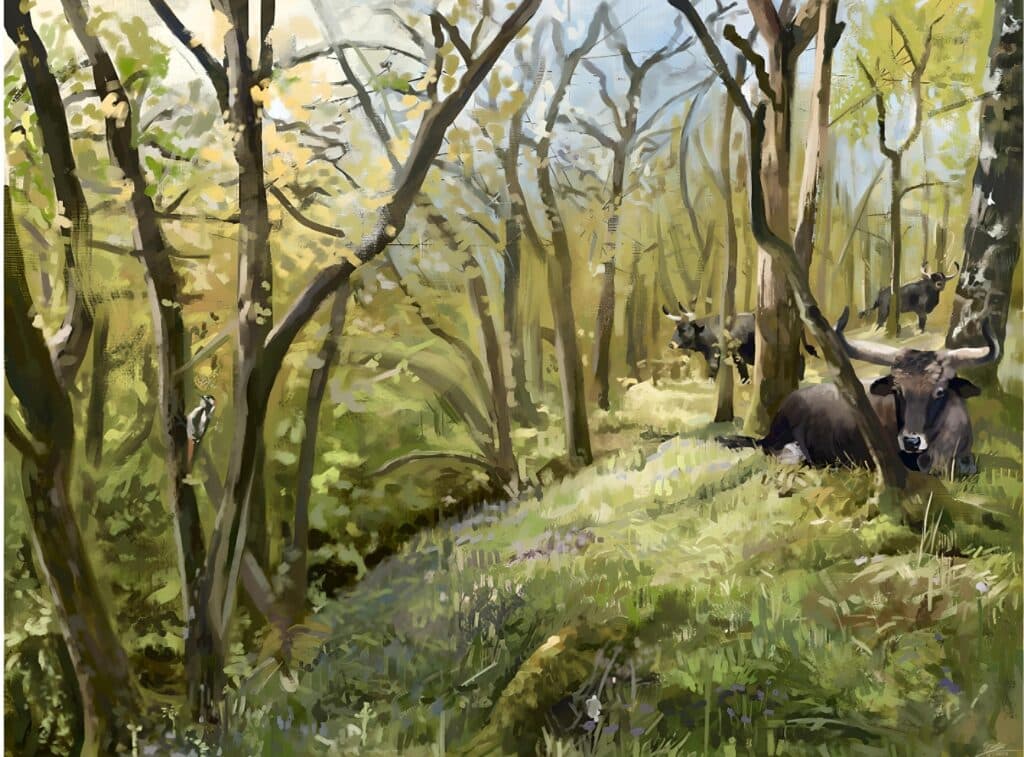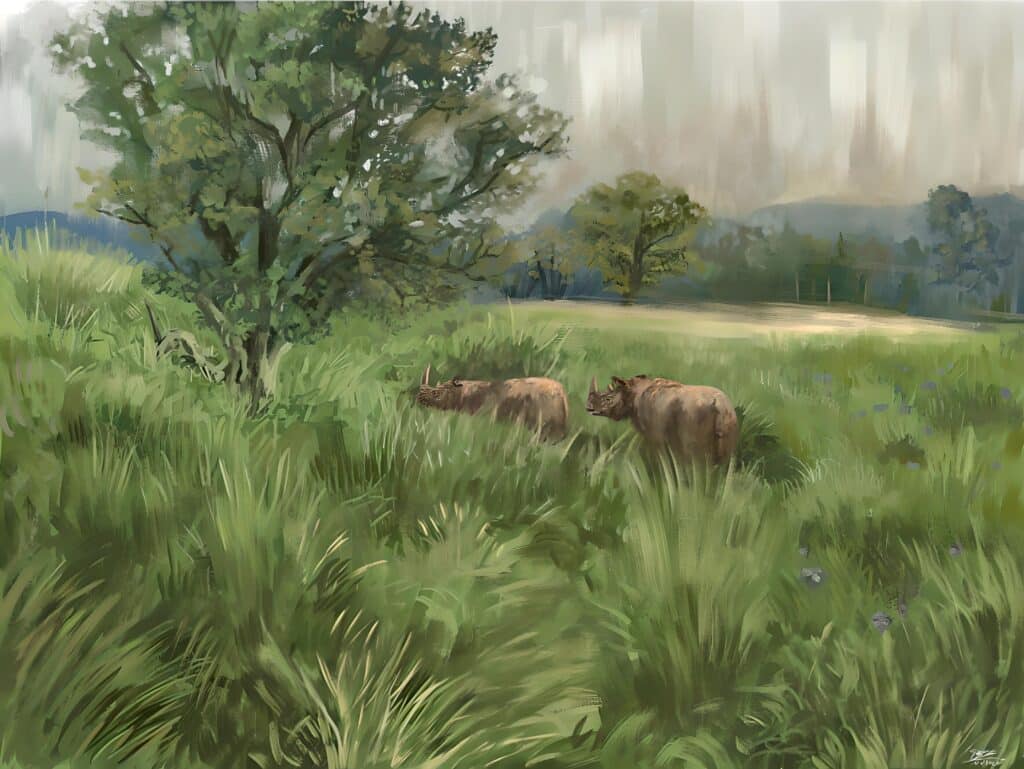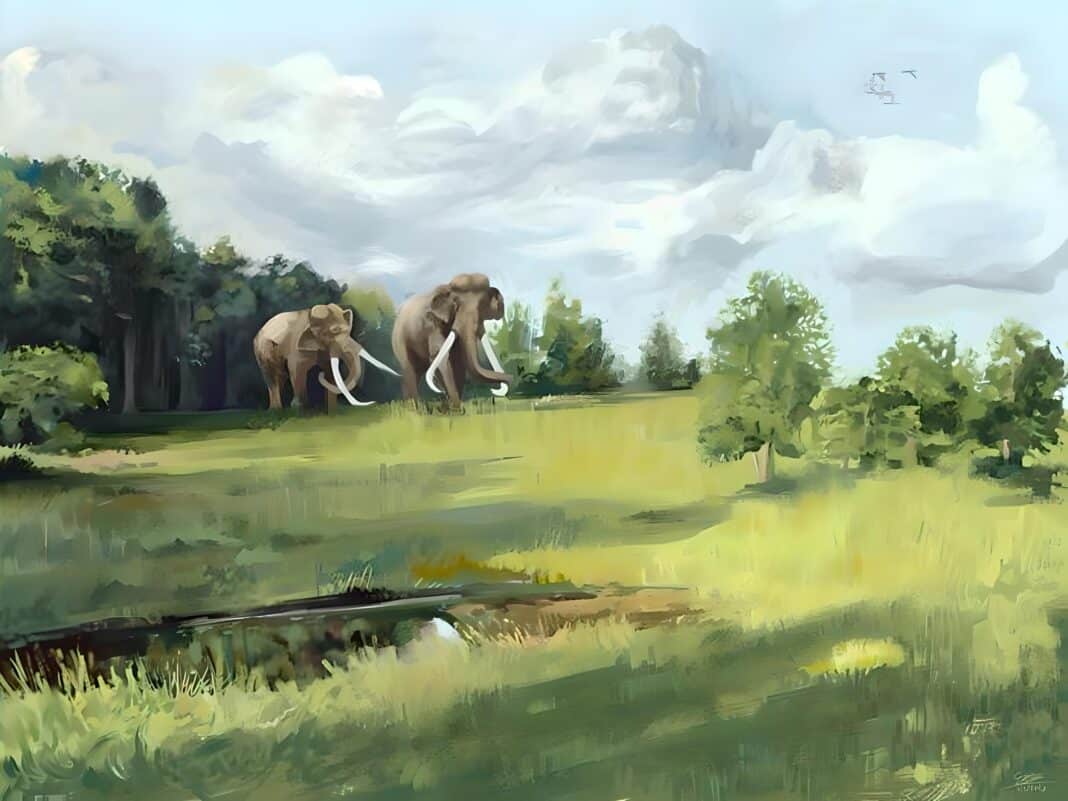What if dense forests did not cover pre-historic Europe and our ancestors did not fell the forests, drain the swamps and cultivate heathlands?
Instead, what if 50 to 75% of the landscape was covered by open or semi-open vegetation, likely due to large mammals, including aurochs, horses, bison, elephants and rhinos?
New research has challenged the conventional wisdom that Europe, outside of the Ice Ages (known as glacial periods), has always been covered by thick and dense forests.
It strongly supports the return of trophic rewilding, which could see the return of large-scale mammals to the lands.
Published in the Science Advances journal, scientists from the Aarhus University in Denmark are correcting mistruths and reassessing European nature.
By studying the composition of pollen in the ancient soil layers of buried wetlands, they have been able to deduce what the vegetation looked like more than 100,000 years ago and used ancient fossils to determine the role that large mammals played in regulating the landscape.
According to Elena Peace, the study’s lead author, “the idea that the landscape was covered by dense forest is simply not right.”
“Nature during the last interglacial period – a period with a mild climate similar to today, but before modern humans arrived – was full of variation,” said Professor Jens-Christian Svennin, co-author of the study.
The study centres on the last interglacial period, which lasted from 129,000 years ago to around 115,000 years ago, “which is significant, as the earth is entering a new interglacial period exacerbated and likely prolonged by human greenhouse gas emissions.”
They claim that the earth’s current glacial period lasted about 2.6 million years and is the fifth significant glacial period during its four-billion-plus year existence, with “the earliest glacial period was about 2 billion years ago and lasted for around 300 million years.”
During the last interglacial period, European landscapes harboured large amounts of open and semi-open vegetation with shrubs, with “light-demanding trees and herbs alongside stands of tall-growing shade trees.”
Using ancient pollen samples, they identified which plants grew more than 100,000 years ago in the last interglacial period before integrating data from pollen samples from large parts of Europe to reveal which plants thrived in dense forests.
“Tall-growing shade trees like spruce, linden, beech, and hornbeam will be most prevalent in dense forests. However, the results show that hazel covered large areas of the landscapes. Hazel is a bush that doesn’t grow in large quantities in dense forests,” Professor Jens-Christian Svenning remarked.
In the world of plants, competition for sunlight is fierce, and the trees that reach the highest with their crowns can capture the most sunlight and win that competition. In beech forests, trees take almost all the sunlight.
“This means that other, smaller trees and shrubs, such as hazel, cannot grow in a beech forest,” the study said.
“Hazel thrives in the open countryside and open or disturbed forest and tolerates disturbance from large animals,” he said before continuing:
” Whereas species like beech and spruce often are severely damaged or killed by cutting or browsing, hazel can manage without problems. Even if you cut down a hazel, it will still produce many new shoots.”
“For this reason, hazel was often very common in historical coppice woodlands.”

Large animals kept the landscape open
So, there are indications that dense forests did not cover Europe before humans existed. But what did the landscape look like?
“We know many large animals lived in Europe then, including aurochs, horses, bison, elephants and rhinos. They must have consumed large amounts of plant biomass and thereby could keep the tree growth in check,” Professor Jens-Christian Svenning said.
“Of course, it’s also likely that other factors, such as floods and forest fires, also played a part.”
Nonetheless, he said there was no evidence that this caused enough disturbance to change the landscape.
“For example, forest fires encourage pine trees, but mostly, we did not find pine as a dominant species.”
Although the research group cannot be 100% certain about the extent to which large animals were behind the open areas, they said that fossils provide a strong indication, especially in Western Europe.
“We have looked at several finds of beetle fossils from that time in the UK. Although there are beetle species that thrive in forests with frequent forest fires, we found none of them in the fossil data. Instead, we found large quantities of dung beetles, which shows that large herbivores have densely populated parts of the landscape,” he says.

Merck’s rhinoceros with pollen between its teeth
According to Professor Jens-Christian Svenning, a Polish study underlines the impact of megafauna and herbivores on the landscape.
“In Poland, researchers have taken a closer look at fossils from Merck’s rhinoceros to see what this large animal lived on. They found remnants of pollen and twigs between its teeth, and when they analysed them, they could see that a large amount came from hazel.”
“So the rhinoceros has trudged around eating branches and leaves from hazel bushes. It also supports the theory that the large animals have affected the vegetation, like historical coppice woodlands. At the same time, marks of its teeth suggest it had foraged a lot on grass and sedges through its lifetime.”

An argument for rewilding
According to Ms Pearce, large animals have an essential role in restoration. “Now we know there was much variation in the landscape. Everything suggests that this variation arose because large animals affect the vegetation structure. Many large animals from the interglacial period are now extinct, but we still have bison, horses and oxen.”
“Without large animals, natural areas become dominated by dense vegetation, in which many species of plants and butterflies, for example, cannot thrive. Therefore, we must restore large animals to the ecosystems to encourage biodiversity.”






